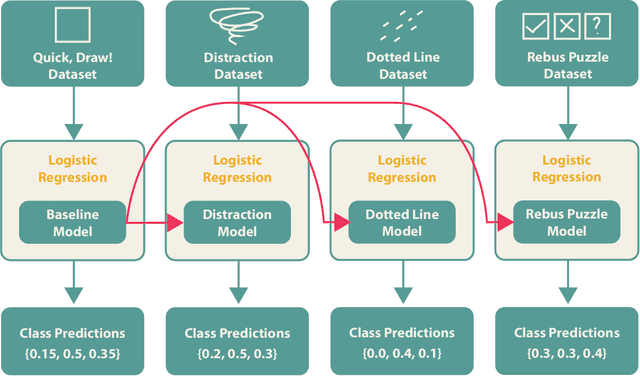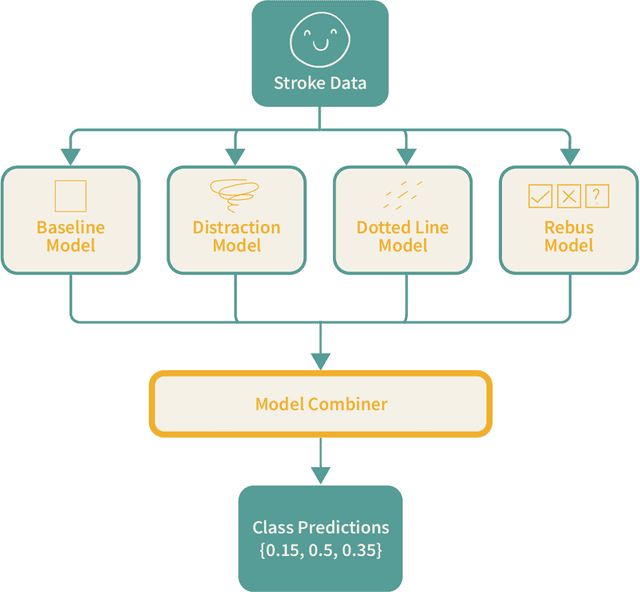Evan Freed
Dealing with Adversarial Player Strategies in the Neural Network Game iNNk through Ensemble Learning
Jul 05, 2021



Abstract:Applying neural network (NN) methods in games can lead to various new and exciting game dynamics not previously possible. However, they also lead to new challenges such as the lack of large, clean datasets, varying player skill levels, and changing gameplay strategies. In this paper, we focus on the adversarial player strategy aspect in the game iNNk, in which players try to communicate secret code words through drawings with the goal of not being deciphered by a NN. Some strategies exploit weaknesses in the NN that consistently trick it into making incorrect classifications, leading to unbalanced gameplay. We present a method that combines transfer learning and ensemble methods to obtain a data-efficient adaptation to these strategies. This combination significantly outperforms the baseline NN across all adversarial player strategies despite only being trained on a limited set of adversarial examples. We expect the methods developed in this paper to be useful for the rapidly growing field of NN-based games, which will require new approaches to deal with unforeseen player creativity.
iNNk: A Multi-Player Game to Deceive a Neural Network
Jul 17, 2020

Abstract:This paper presents \textit{iNNK}, a multiplayer drawing game where human players team up against an NN. The players need to successfully communicate a secret code word to each other through drawings, without being deciphered by the NN. With this game, we aim to foster a playful environment where players can, in a small way, go from passive consumers of NN applications to creative thinkers and critical challengers.
Revealing Neural Network Bias to Non-Experts Through Interactive Counterfactual Examples
Jan 09, 2020

Abstract:AI algorithms are not immune to biases. Traditionally, non-experts have little control in uncovering potential social bias (e.g., gender bias) in the algorithms that may impact their lives. We present a preliminary design for an interactive visualization tool CEB to reveal biases in a commonly used AI method, Neural Networks (NN). CEB combines counterfactual examples and abstraction of an NN decision process to empower non-experts to detect bias. This paper presents the design of CEB and initial findings of an expert panel (n=6) with AI, HCI, and Social science experts.
 Add to Chrome
Add to Chrome Add to Firefox
Add to Firefox Add to Edge
Add to Edge